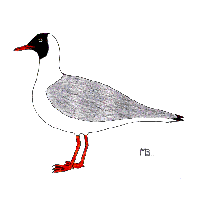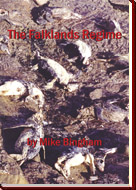 |
 |
| |
|
|
Brown-hooded Gull Local Name: Pink-breasted Gull Breeding Range: Falklands & southern
South America Although common in certain areas, such as Stanley, the Brown-hooded Gull is the least numerous of all the Falkland gulls. It breeds in small colonies on remote coastal plains, usually mixing with other species of gulls or terns. As with other gulls, the Brown-hooded Gull often associates with humans in search of food, but is very sensitive to human disturbance at its breeding site. Nests are simple hollows lined with vegetation, into which 2 to 4 eggs are laid during late December or early January Chicks fledge in February. Brown-hooded Gulls feed on a wide range of marine invertebrates and small fish which they either catch directly from the water surface around kelp beds, or by foraging along the water's edge. In Stanley a small number have learned to forage on refuse or hand-outs. Sexes are similar in appearance. |
|
|
||||||||||||||||||||||||||||




